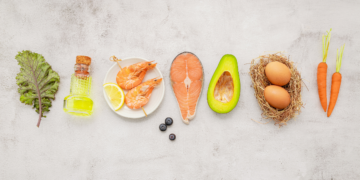Starting your own vegetable garden is one of the most rewarding ways to enjoy fresh, homegrown produce. For beginners, however, it can seem intimidating. The good news is that not all vegetables require advanced gardening skills or years of experience to grow successfully. With the right choices and a bit of care, you can enjoy a bountiful harvest from vegetables that are both easy to grow and highly productive.
In this guide, we’ll explore the 10 easiest vegetables to grow in your backyard garden, offering detailed insights into why they are so beginner-friendly. From soil preparation to planting, watering, and pest control, this comprehensive article will cover everything you need to ensure a thriving, low-maintenance vegetable garden.
Why Choose Easy Vegetables for Your Garden?
Choosing easy-to-grow vegetables for your garden offers several advantages, especially for beginner gardeners. Many vegetables are resilient, require minimal upkeep, and can adapt to different environments, making them perfect for those just starting out. The key to a thriving garden is building your gardening skills step by step, and by opting for simpler vegetables, you’ll be setting yourself up for early successes rather than frustration. Let’s explore why starting with easy vegetables is a smart choice.
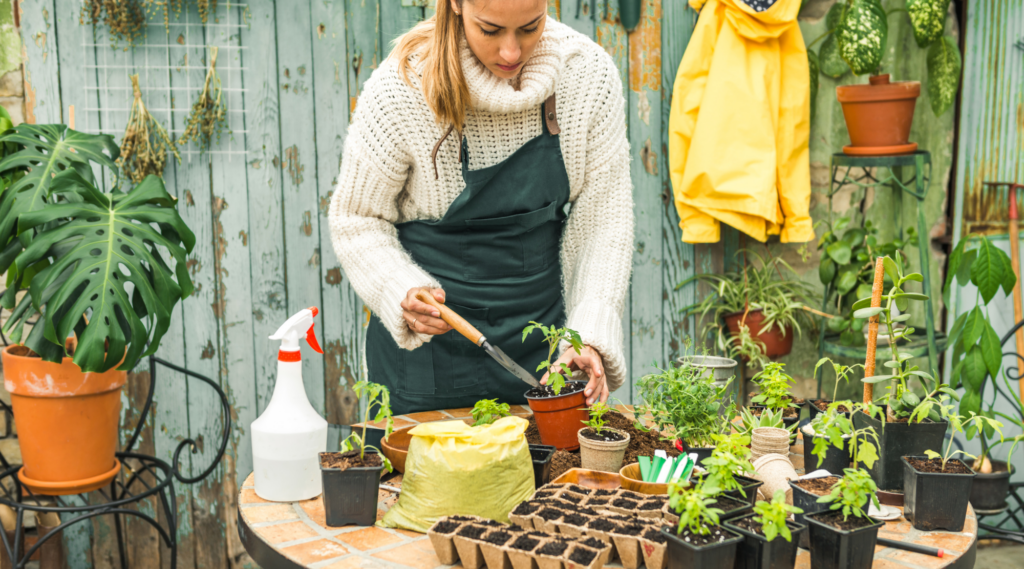
Benefits of Starting with Easy Vegetables
For first-time gardeners, success in the early stages is crucial to staying motivated. Easy vegetables are forgiving when it comes to common gardening mistakes such as irregular watering, imperfect soil conditions, or slight variations in temperature. This makes them a great starting point for building confidence. They typically grow faster, which provides quicker results, allowing gardeners to see the fruits (or vegetables) of their labor without long waiting periods. Harvesting your first batch of homegrown produce is immensely satisfying, reinforcing the benefits of growing your own food.
Easy vegetables also tend to have shorter growing seasons and produce higher yields, which means you get more produce in a shorter amount of time. This quick turnover is ideal for gardeners who want to make the most of a growing season or those experimenting with small spaces, like container gardens or raised beds. Vegetables such as radishes and lettuce, for example, can be harvested within a few weeks, giving you quick wins and encouraging you to expand your gardening efforts.
Lower Maintenance, Higher Success Rates
Many easy-to-grow vegetables are low maintenance, meaning they require less hands-on care throughout their growth cycle. They are often resistant to pests, diseases, and weather fluctuations, which can be a huge relief for beginners who may not yet know how to manage these challenges. Crops like zucchini, green beans, and tomatoes thrive with just regular watering, sunlight, and a little attention to soil health. They don’t demand extensive fertilization or constant pruning, allowing you to focus on learning the basics without feeling overwhelmed.
Moreover, easy vegetables tend to be more forgiving in different climates. If you’re gardening in a region with inconsistent weather, resilient plants that can tolerate drought, heat, or cooler temperatures will ensure your garden thrives despite external challenges. By choosing these vegetables, you’re more likely to succeed even if the growing conditions aren’t perfect.
Building Gardening Confidence for Beginners
The most important reason to start with easy vegetables is that it helps build your confidence as a gardener. Gardening is a skill that takes time to develop, and by choosing crops that grow well with minimal effort, you’ll feel empowered to take on more challenging plants in the future. Each successful harvest teaches you more about the fundamentals of gardening, such as proper watering, soil management, and plant care.
Starting with easy vegetables helps you establish a routine of observation and care. As you watch your plants grow and eventually harvest them, you’ll develop a deeper understanding of the growing process, which will be invaluable when you branch out into more demanding vegetables or garden designs. Gardening is not only about the results but also the journey — and starting with easy, rewarding vegetables makes that journey more enjoyable and sustainable.
Common Traits of Easy-to-Grow Vegetables
Most easy vegetables share some common characteristics that make them ideal for beginners. They generally require:
- Minimal watering and fertilization: They thrive in average soil and don’t need constant attention.
- Adaptability to different climates: They grow well in a wide range of environments and are less sensitive to temperature fluctuations.
- Natural resistance to pests and diseases: This means they can flourish without extensive use of pesticides or pest control techniques.
- Fast growth cycles: These plants often mature quickly, offering a quicker payoff for your efforts.
Some of the easiest vegetables to start with include tomatoes, lettuce, zucchini, radishes, and cucumbers. These vegetables will be explored in detail throughout this article, giving you the knowledge to kickstart your backyard garden with success.
1. Tomatoes
Tomatoes are among the most popular vegetables (or technically fruits) for home gardeners, and for good reason. They are easy to grow, produce a high yield, and are incredibly versatile in the kitchen. Whether you’re interested in growing cherry tomatoes for snacking, Roma tomatoes for sauces, or heirloom varieties for their unique flavor, tomatoes are an excellent choice for beginners.
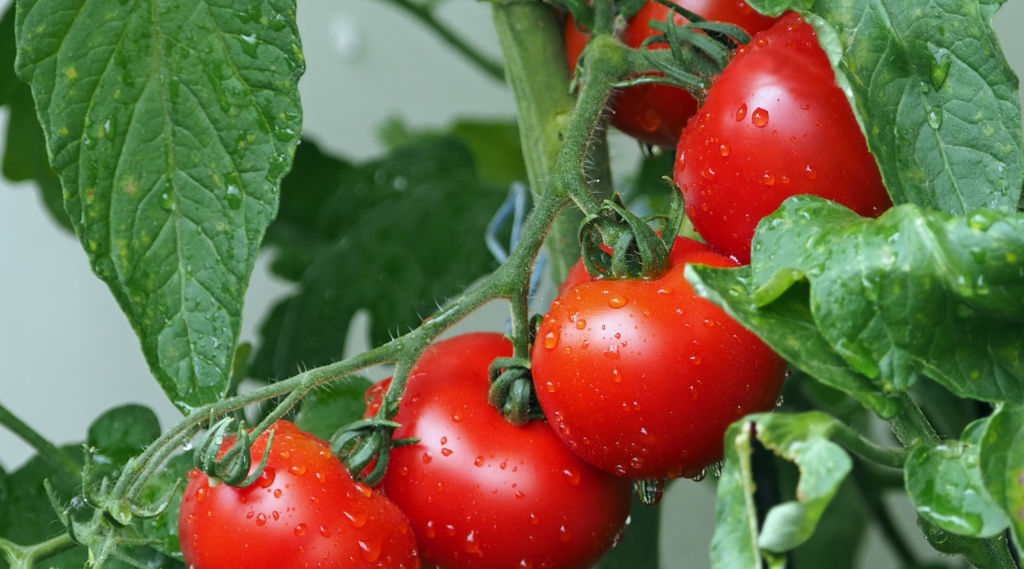
Best Varieties for Backyard Gardens
- Cherry Tomatoes: These small, sweet tomatoes are perfect for snacking or adding to salads. They’re easy to grow and produce fruit rapidly.
- Roma Tomatoes: Known for their dense flesh and few seeds, Roma tomatoes are ideal for making sauces, pastes, and canning.
- Heirloom Tomatoes: Heirloom varieties are prized for their unique colors and flavors, offering a diverse and delicious harvest.
Sunlight, Soil, and Watering Needs
Tomatoes thrive in full sun and need at least six to eight hours of sunlight daily to produce their best yield. They prefer well-draining soil rich in organic matter, so it’s important to add compost or well-rotted manure to the soil before planting.
Watering tomatoes correctly is crucial. They need consistent watering, especially when fruits begin to develop, but avoid getting the leaves wet to prevent fungal diseases. Mulching around the base of the plants can help retain moisture and regulate soil temperature.
Tips for Growing Tomatoes
- Starting Seeds vs. Buying Seedlings: While starting tomatoes from seeds is an option, buying seedlings from a local nursery is quicker and ensures you get a head start on the growing season.
- Trellising and Supporting Tomato Plants: Tomatoes are vining plants, so they need support to grow upright. Use cages, stakes, or trellises to prevent the plant from sprawling on the ground, where it could be susceptible to pests and diseases.
- Preventing Common Diseases: Tomatoes are prone to diseases like blight and wilt. Crop rotation, proper spacing, and avoiding overhead watering can reduce the risk of these problems.
Harvesting and Using Tomatoes
Tomatoes should be harvested when they are fully colored and slightly soft to the touch. The exact timing depends on the variety, but most tomatoes will be ready to pick 60-85 days after planting. Use them fresh in salads, sandwiches, or salsas, or preserve them by making sauces, soups, or even drying them for later use.
2. Cucumbers
Cucumbers are another fantastic vegetable for beginners, as they grow quickly and produce abundant fruit. They can be grown on the ground, but for the best results, they benefit from vertical growing with the use of a trellis or fence.
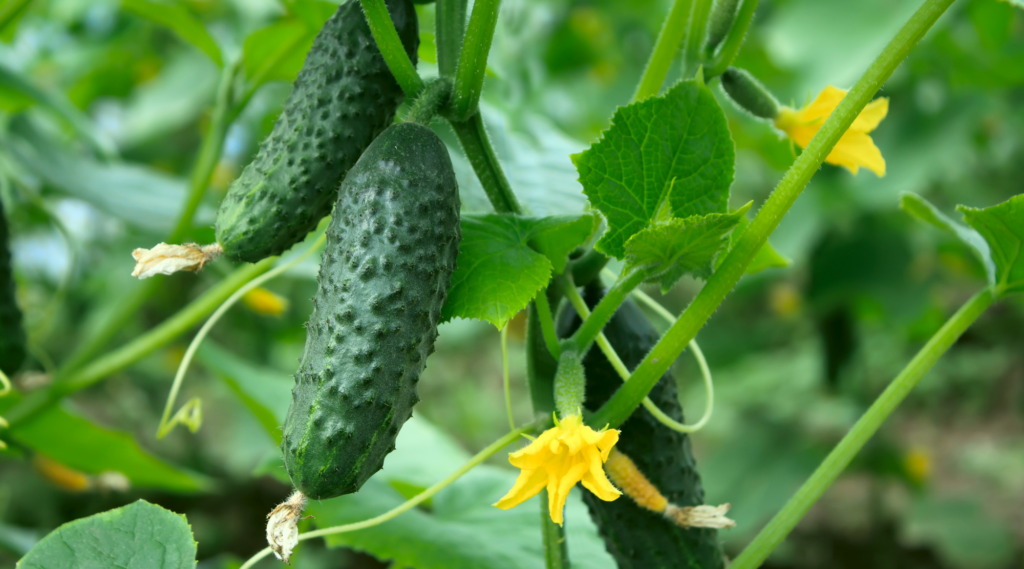
Best Varieties for Small Spaces
- Bush Cucumbers: These are compact varieties that don’t require much space and are ideal for smaller gardens or containers.
- Pickling Cucumbers: Smaller and bumpier than slicing cucumbers, these are perfect for making homemade pickles.
Planting Tips and Required Growing Conditions
Cucumbers thrive in warm weather, so plant them after the last frost when the soil temperature has reached at least 60°F (15°C). They need well-drained, nutrient-rich soil, so it’s a good idea to mix compost into your garden bed before planting. Cucumbers also require a lot of sunlight, so place them in an area where they’ll receive at least six hours of direct sunlight each day.
Trellising and Supporting Cucumbers
Supporting cucumbers vertically has several advantages. It keeps the fruit off the ground, preventing rot and pest issues, while also allowing for better air circulation around the plant, which reduces the risk of diseases. Use a trellis, fence, or netting to train the cucumber vines upward.
Harvesting and Storage Tips for Cucumbers
Cucumbers grow quickly and should be harvested while they are still small and firm for the best flavor. Pick them regularly to encourage more fruit production. Store cucumbers in the refrigerator to keep them fresh for several days, or pickle them for long-term preservation.
3. Carrots
Carrots are one of the easiest root vegetables to grow, and they’re perfect for gardeners with looser, sandy soil. They come in various colors, from the traditional orange to yellow, purple, and even white varieties, making them a visually appealing addition to any garden.
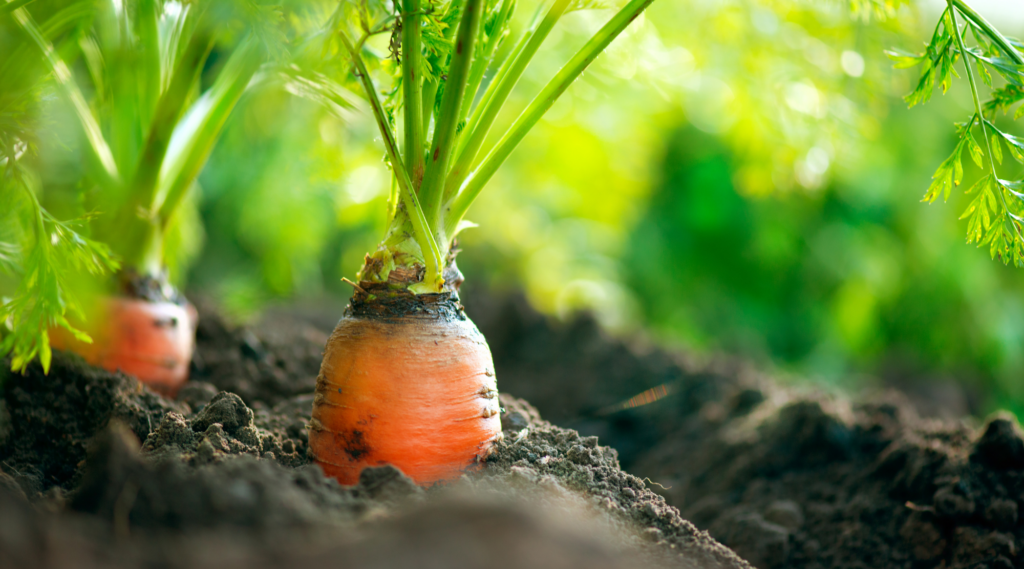
Soil Requirements for Growing Carrots
Carrots need loose, well-drained soil to grow properly. If the soil is too compact or rocky, the roots may become misshapen. To prepare the soil, remove any stones or debris and work in organic matter to improve texture and fertility. Carrots also prefer slightly acidic to neutral soil with a pH of 6.0 to 7.0.
Best Varieties for Beginners
- Nantes: A classic carrot variety known for its sweet flavor and cylindrical shape.
- Imperator: These are long, tapered carrots that you often find in grocery stores.
- Danvers: Shorter and more tolerant of heavier soils, Danvers carrots are a reliable variety for most gardens.
Spacing and Sowing Techniques
Carrot seeds are tiny and can be tricky to sow. For even distribution, mix the seeds with sand or plant them using seed tapes. Space seeds about 1-2 inches apart, and thin seedlings to 3 inches apart once they’ve sprouted. Keep the soil moist until germination, which typically takes 2-3 weeks.
Harvesting and Storing Carrots
Carrots are ready to harvest once they reach the desired size, typically 60-75 days after planting. Loosen the soil around the carrot with a garden fork before gently pulling them out. Wash and store them in the refrigerator for up to several weeks, or leave them in the ground to harvest as needed.
4. Lettuce
Lettuce is one of the easiest and fastest-growing vegetables you can plant. It’s perfect for beginner gardeners due to its adaptability and quick growth cycle. You can start harvesting lettuce leaves in just a few weeks, making it a rewarding plant to grow.
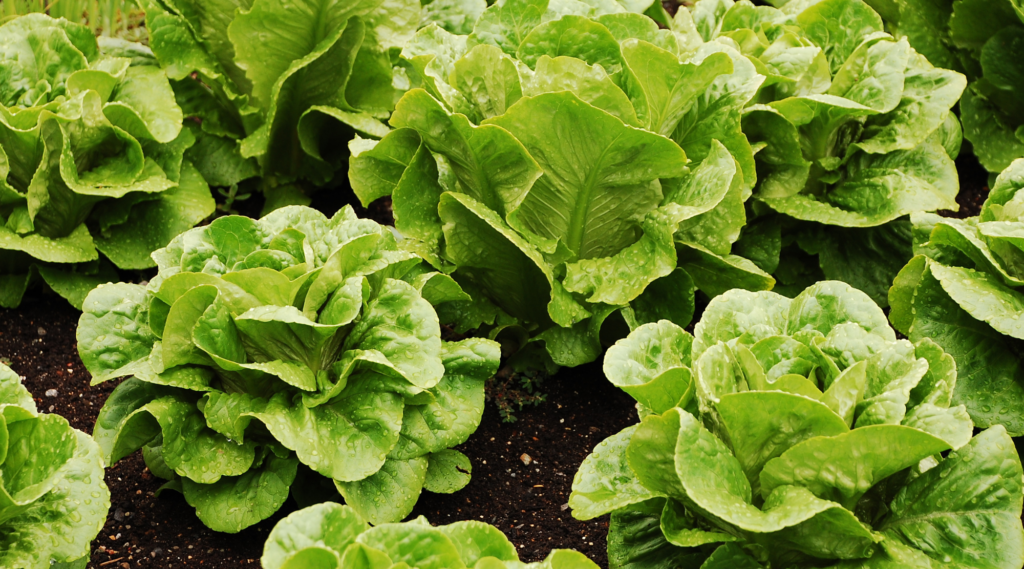
Quick Growth Cycle of Lettuce
Lettuce grows quickly, especially in cooler temperatures, and you can start harvesting young leaves in as little as 30 days. This makes it perfect for gardeners who want fast results. You can plant lettuce in succession, sowing seeds every few weeks, to ensure a continuous harvest throughout the season.
Best Lettuce Varieties for Different Climates
- Leaf Lettuce: One of the easiest types of lettuce to grow, leaf lettuce varieties like Black Seeded Simpson and Red Sails are perfect for beginners.
- Butterhead Lettuce: Known for its tender leaves and mild flavor, butterhead varieties like Bibb and Boston thrive in cooler temperatures.
- Romaine Lettuce: Romaine is a bit slower to mature but is known for its crisp, hearty leaves, making it a favorite for salads.
Tips for Continuous Harvesting
To get the most out of your lettuce plants, use the “cut-and-come-again” method. This involves harvesting the outer leaves as you need them while allowing the inner leaves to continue growing. This way, you’ll have fresh lettuce for salads throughout the season without having to replant.
5. Radishes
Radishes are perfect for beginners because they grow quickly and require minimal care. They’re typically ready to harvest just 25-30 days after planting, making them one of the fastest-growing vegetables you can grow in your garden.
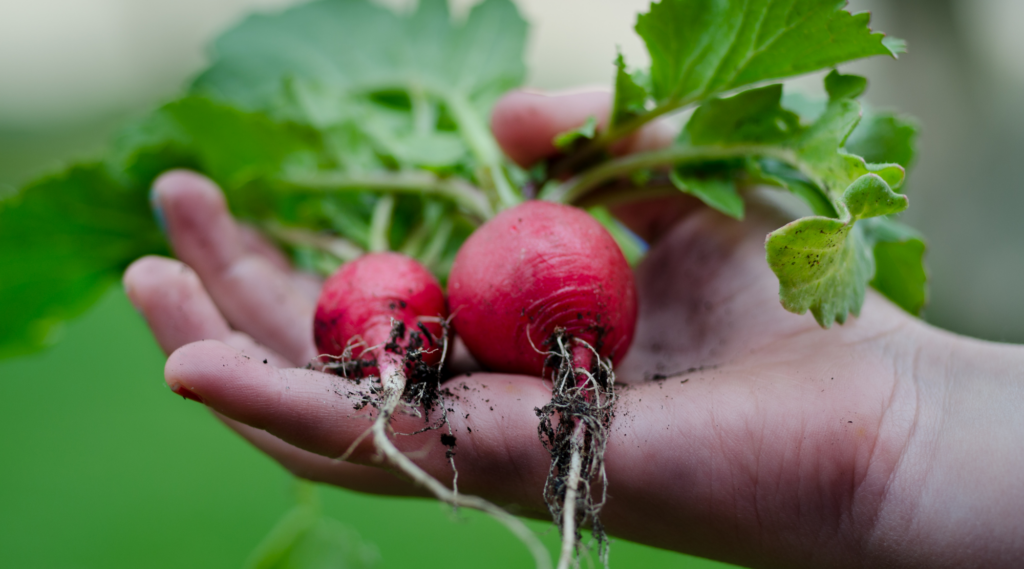
Radishes as a Fast-Growing, Beginner-Friendly Vegetable
Radishes thrive in cooler weather and can be planted in both spring and fall. They don’t require much space, making them ideal for small gardens or container gardening. Plus, radishes have a natural resistance to pests, making them a low-maintenance crop.
Planting Depth and Spacing Tips
Sow radish seeds about ½ inch deep and 1 inch apart in rows that are 12 inches apart. Radishes do best in loose, well-drained soil, and they prefer full sun or partial shade. Water the plants regularly, keeping the soil evenly moist for optimal growth.
Harvesting Radishes at the Right Time
Radishes should be harvested while they’re still small and tender for the best flavor. If left in the ground too long, they can become woody and overly spicy. Simply pull them up by their tops when they reach about the size of a golf ball. Radishes can be used fresh in salads or pickled for later use.
6. Zucchini
Zucchini is a prolific grower and is known for producing a large harvest with minimal effort. This makes it a great choice for beginner gardeners who want a vegetable that will provide plenty of fresh produce throughout the growing season.
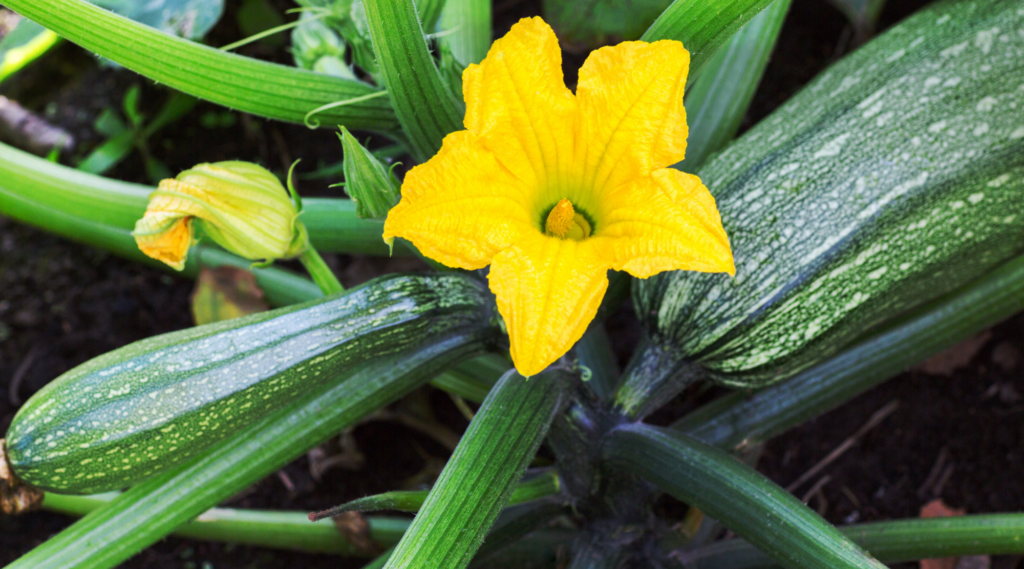
How Zucchini Produces Abundant Harvests
Zucchini plants are highly productive, and just a few plants can provide more zucchini than most families can eat! Zucchini plants need plenty of space to grow, as they tend to sprawl, but they don’t require much maintenance once they’ve been established.
Space Requirements and Proper Care
Zucchini plants need to be spaced about 3 feet apart to give them room to grow. They thrive in warm weather and full sunlight, so make sure they get at least 6-8 hours of sun each day. Water consistently, keeping the soil evenly moist, but avoid watering the leaves to prevent fungal diseases.
Common Zucchini Growing Mistakes to Avoid
One common mistake when growing zucchini is not harvesting them early enough. Zucchinis grow quickly, and if left on the plant for too long, they can become oversized and tough. It’s best to harvest zucchini when they are about 6-8 inches long for the best flavor and texture.
7. Spinach
Spinach is a cool-weather crop that’s packed with nutrients and easy to grow, making it a favorite for many home gardeners. It’s versatile in the kitchen and can be used in salads, smoothies, or cooked dishes.
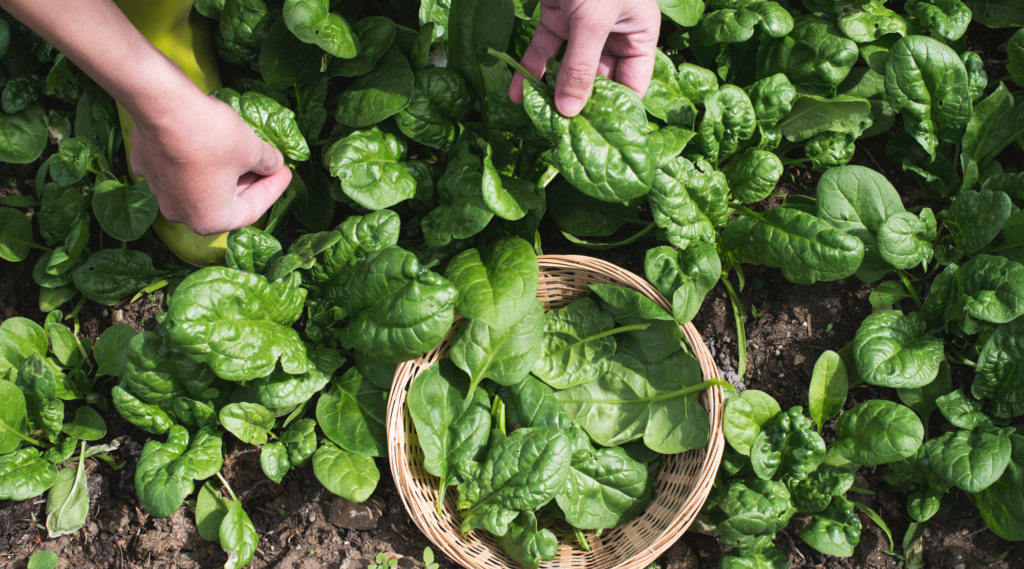
Nutritional Benefits of Growing Spinach
Spinach is rich in vitamins A, C, and K, as well as iron and calcium. Growing spinach at home allows you to have a constant supply of fresh, nutrient-dense greens that can be harvested at various stages for different culinary uses.
How to Sow and Maintain Spinach Plants
Spinach thrives in cool weather, making it ideal for spring and fall planting. It prefers well-drained, fertile soil and full sun to partial shade. Sow spinach seeds about ½ inch deep and 2 inches apart, and thin them to 6 inches apart once the seedlings are established. Keep the soil consistently moist, especially during dry spells.
Tips for Growing Spinach in Cooler Weather
Spinach bolts, or goes to seed, in hot weather, so it’s important to plant it in cooler months. If you live in a warmer climate, consider growing spinach in partial shade or using shade cloth to protect the plants from excessive heat.
8. Peas
Peas are a wonderful cool-season crop that are easy to grow and delicious to eat. Whether you choose snap peas, snow peas, or garden peas, they’re a great addition to any backyard garden.
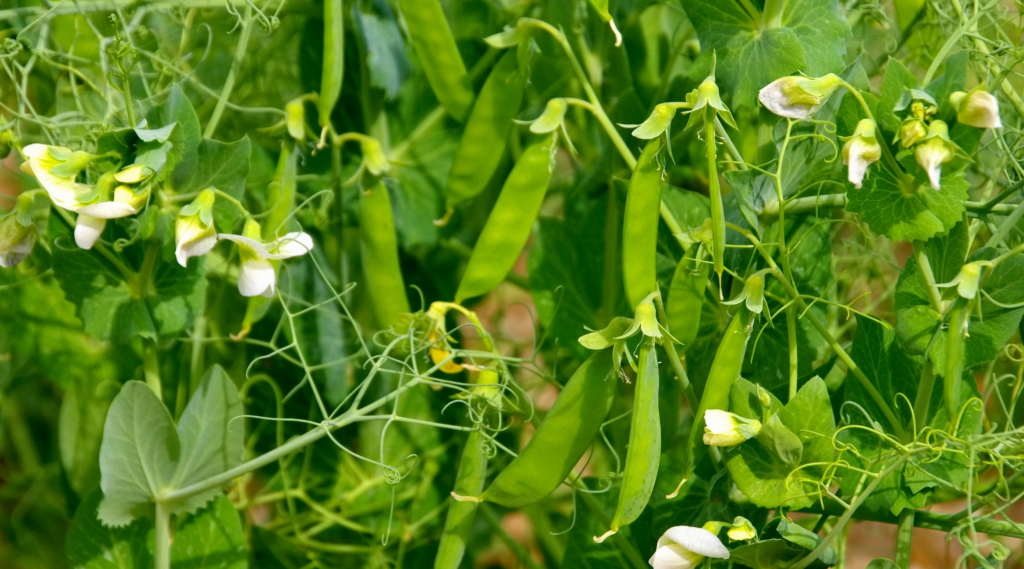
Why Peas are Ideal for Backyard Gardens
Peas are low-maintenance and can be planted early in the season, as they tolerate cooler temperatures. They’re also one of the few vegetables that can fix nitrogen in the soil, improving the fertility of your garden for future crops.
Best Practices for Supporting Pea Plants
Peas are vining plants and benefit from support, such as trellises or stakes, to keep them off the ground. This also helps with air circulation, which can reduce the risk of disease. Plant peas in well-drained soil and in full sun for the best yield.
How to Harvest and Store Peas
Peas are ready to harvest when the pods are full but still tender. Snap and snow peas can be eaten pod and all, while garden peas are shelled before eating. Peas can be stored in the refrigerator for a few days or blanched and frozen for longer storage.
9. Bell Peppers
Bell peppers are another easy vegetable to grow, offering bright, crisp produce that’s perfect for salads, stir-fries, or grilling. They come in a variety of colors, including green, red, yellow, and orange.
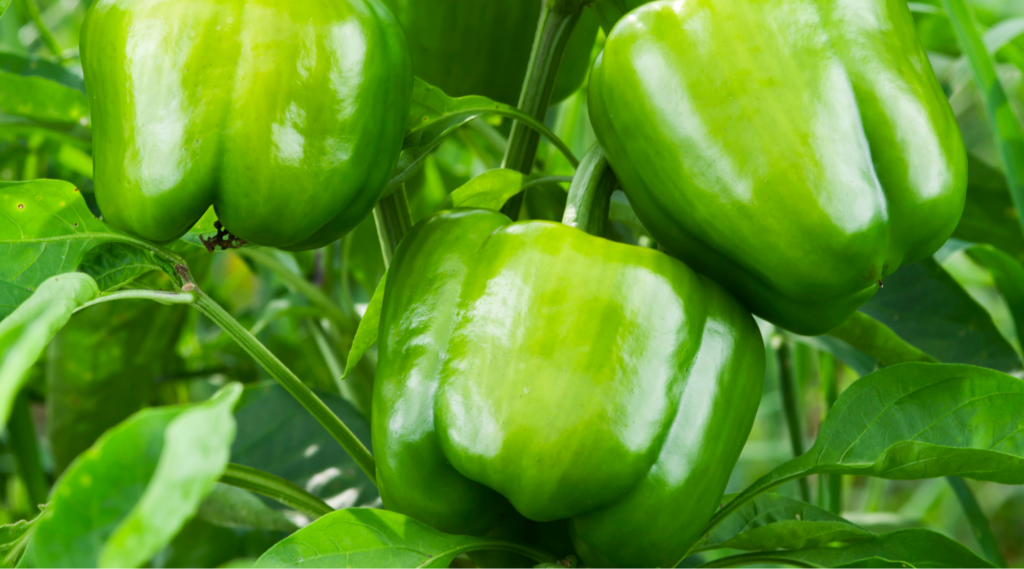
Ideal Growing Conditions for Bell Peppers
Bell peppers thrive in warm weather and require full sun and well-drained soil to produce healthy plants. They should be planted after the last frost when the soil has warmed up to at least 70°F (21°C). Space the plants about 18 inches apart to allow for adequate air circulation and prevent diseases.
Varieties of Peppers for Small Gardens
- California Wonder: This classic bell pepper variety produces large, sweet fruits that are perfect for slicing and eating fresh.
- Gypsy: A smaller, early-maturing variety that’s ideal for short growing seasons or cooler climates.
Fertilization and Watering Techniques for Healthy Plants
Bell peppers are heavy feeders and benefit from regular fertilization throughout the growing season. Use a balanced fertilizer or compost to keep them healthy. Water consistently, especially during dry periods, but avoid overwatering to prevent root rot.
10. Green Beans
Green beans are a low-maintenance crop that produces a generous yield, making them a favorite among beginner gardeners. Whether you grow bush beans or pole beans, they’re easy to plant and care for.

Green Beans as a Low-Maintenance Vegetable
Green beans are a great choice for gardeners who want a crop that doesn’t require a lot of attention. They thrive in full sun and well-drained soil and can tolerate a variety of growing conditions. Once established, green beans need minimal care beyond regular watering.
Pole vs. Bush Beans: Which to Choose
- Pole Beans: These are vining beans that need support, such as a trellis or stakes, to grow upright. They tend to produce beans over a longer period of time.
- Bush Beans: Bush beans grow in a compact form and don’t require support. They produce all their beans in a short window, making them ideal for gardeners who want a quick harvest.
Harvesting Green Beans for Maximum Yield
Green beans should be harvested when the pods are firm but still tender, before the seeds inside begin to swell. Regular picking encourages the plants to produce more beans throughout the growing season. Use green beans fresh, or blanch and freeze them for later use.
Tips for a Thriving Backyard Garden
To ensure your backyard vegetable garden thrives, it’s important to follow a few key gardening practices:
- Companion Planting: Certain plants grow better when planted together. For example, tomatoes and basil make great companions, as basil can repel pests that target tomatoes.
- Efficient Watering Practices: Water your garden in the early morning or late evening to minimize evaporation. Use drip irrigation or soaker hoses to deliver water directly to the roots.
- Using Natural Fertilizers and Mulch: Organic fertilizers, such as compost or well-rotted manure, provide essential nutrients without the use of synthetic chemicals. Mulching helps retain moisture, suppress weeds, and improve soil structure.
Maintaining Your Backyard Garden Throughout the Seasons
A successful backyard garden requires year-round care. Here are some tips for maintaining your garden through the seasons:
- Spring: This is the time to prepare your soil, start seeds indoors, and plant cool-season crops like spinach, peas, and radishes.
- Summer: Water consistently, mulch to retain moisture, and harvest vegetables regularly to encourage more growth.
- Fall: Plant cool-season crops for a second harvest, clean up garden beds, and prepare for winter.
- Winter: Protect your garden from frost by using row covers or cold frames. You can also mulch heavily around perennial plants to insulate them from freezing temperatures.
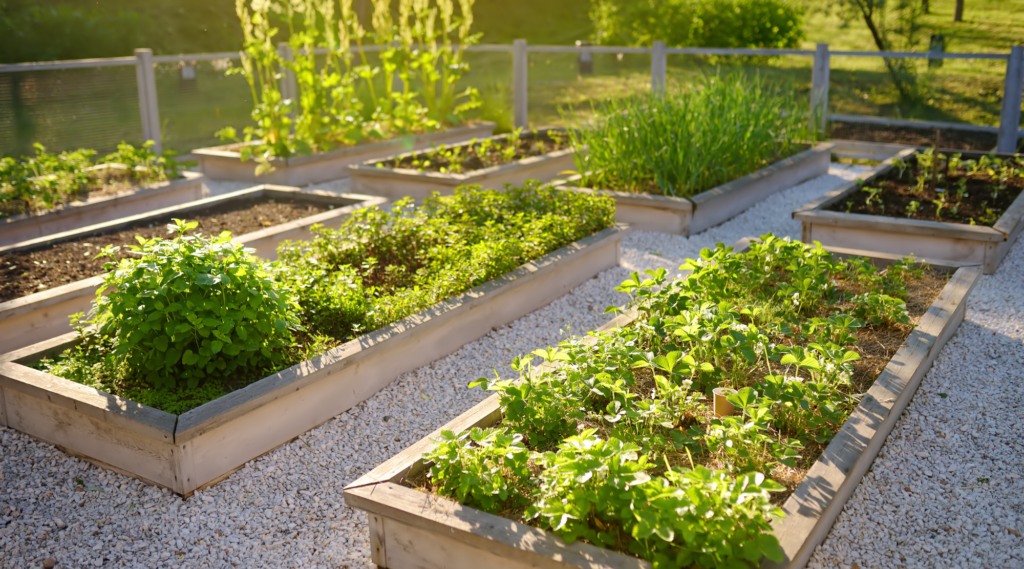
Common Challenges in Backyard Vegetable Gardening
Even with easy-to-grow vegetables, you may encounter some common challenges:
- Pests and Diseases: Use natural remedies such as neem oil, diatomaceous earth, or companion planting to deter pests. Regularly check for signs of disease, such as yellowing leaves or spots, and remove affected plants promptly.
- Overwatering and Root Rot: Make sure your garden has well-drained soil, and avoid overwatering, especially in cooler months when plants require less water.
- Weather Extremes: Protect your plants from frost by covering them with garden cloths or bringing container plants indoors. During heatwaves, provide extra shade to prevent wilting and sunburn.
Conclusion
Starting a backyard vegetable garden with easy-to-grow vegetables is a rewarding experience that will yield delicious, fresh produce throughout the growing season. By choosing resilient, low-maintenance crops such as tomatoes, cucumbers, and zucchini, you can ensure early success, build your gardening skills, and enjoy the many benefits of growing your own food. With the right care, your backyard garden will thrive, providing you with nutritious, homegrown vegetables for years to come.
Happy gardening!



